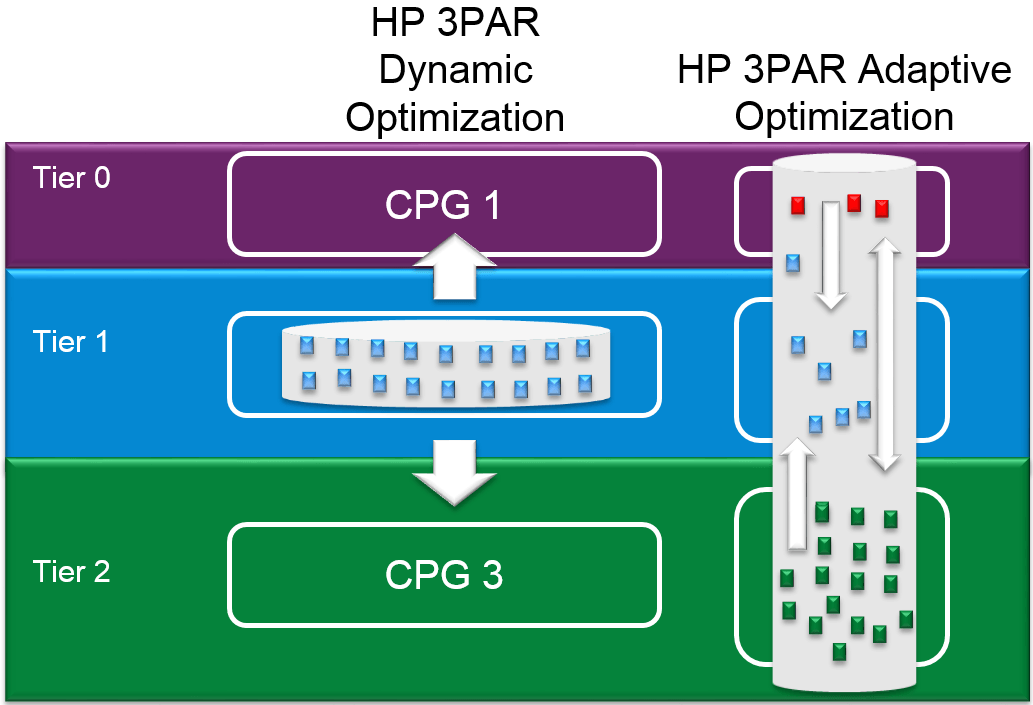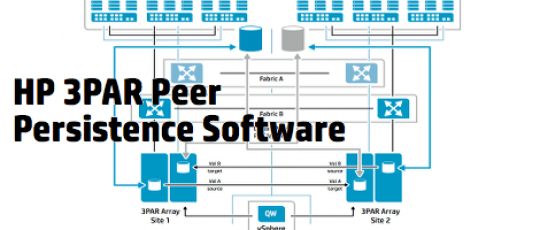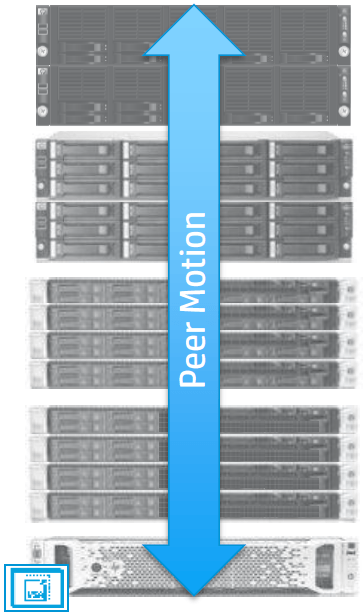When I write this blog post I am teaching a HP Storage class in London… Instead of going into the city I choose to write this post… Because every time again people ask me “What is convergence and why do we need it?
First things first… My fellow Calvin Zito aka HPStorageGuy created this great chalktalk about the basics of convergence and a nice look at the competition, as an example of how it should not be… 😉
Off course there is a difference between the marketing buzz words and the ‘real life’… Let’s dive a bit deeper…
When I Google on Converged Storage I get the following WIKI article as first result:
http://en.wikipedia.org/wiki/Converged_storage
In the characteristics section I see 4 statements:
– Scale-Out Architecture
– Multitenant Architecture
– Storage Federation
– Common hardware & software
I don’t think that there will be any discussion around scale-out architecture, nearly all HP storage platforms 3PAR (StoreServ), Lefthand (StoreVirtual) and Ibrix (StoreAll) are all scale-out based storage platforms (sorry HP marketing, the old names are easier and faster to write than the Store-whatever names).
Multitenancy is one of the keywords of the 3PAR platform, so also here: check!
Well it is actually quite cool to see that HP is making convergence really come true on the other levels as well… Some examples and remarks.
Adaptive Optimization
When I installed my first 3PAR for a customer a few years ago, one of the new ‘high-end / datacenter” features was Adaptive Optimization aka sub-LUN-tiering… The controller decides which is HOT data (and moves it to the fast SSD storage), which is COLD data (and moves it to SATA storage) and leaves the ‘normal’ data on the middle tier being FC drives (Fast Class, not Fiber Channel FYI).
On the picture above you see the difference with Dynamic Optimization which will place an entire volume on a specific tier, independent of being hot or cold data). Adaptive Optimization will split the volume by using the chunklets across the multiple tiers.

With the release of Lefthand OS 11.0, HP enabled the same Adaptive Optimization on the HP StoreVirtual platform. Both on the physical 4335 appliance and the Software Defined Storage version aka the VSA (in the 10TB and 50TB version). For more details check out my other blog post that goes in further details.
The first step towards Converged storage… Enable the same data services on your storage platforms.
Quorum Arbitration / Majority (s)election
Where AO is a cool feature coming from 3PAR to Lefthand, know that there are also features from Lefthand used in 3PAR. Do I notice some amazement?
Well actually the good old FOM aka Failover Manager functionality is now used on the 3PAR platform as well. OK it is not using the same name (it is called quorum witness and is part of Peer Persistence) but is does the same thing. Being the 3rd node that will decide, in case of a network issues (split-brain) or a real disaster (storage array down) that the other – surviving – array will have a majority to bring online all volumes. Just like the FOM is taking care of in a Lefthand cluster.

On the picture above you see the Quorum Witness (being a Virtual Machine) in the center at the bottom, between the 2 arrays to protect.
Peer Motion
One of the other definitions in Converged Storage is Storage Federation.
For Storage Federation, HP puts Peer Motion software in the picture.
This software allows the administrator to migrate data volumes from old to new, or slow to fast storage arrays. Online.
The nice thing is that this feature is available on both 3PAR and Lefthand environments. So in case of Lefthand it is also possible to migrate online data volumes from a physical to virtual cluster and vice versa…

This means that, once your data is on 3PAR or Lefthand platforms, you never have to migrate data anymore, everything can be done online.
This is a lesson to learn by the people of EMC (which I do not claim that they have bad technology, not at all) but I see customers there needing to migrate a bit too often there data from Clarion to VNX to VNX2?
Off the record, know that 3PAR supports also Online Import now from EMC towards 3PAR… Online… 😉 More information in an upcoming blog post…
Future?
Well I cannot take a look at the HP future roadmap (since I do not work for them, and if I would have worked for them I was probably not allowed to talk about it) but the first thing on my wish list would be Peer Motion between Lefthand and 3PAR platforms.
Why? Well today Peer Motion is only available inside 1 platform only. So only between Lefthand nodes OR between 3PAR arrays. Not between 3PAR and Lefthand.
So today HP still has 2 important Scale-Out storage platforms which share already quite some data services but it is not yet 1 hardware platform.
IMHO I do not see the 3PAR ASIC appear in HP Proliant hardware and I also do not see appear Network RAID on 3PAR arrays.
Only thing that remains is setting up a ‘link’ between the 2 platforms. Let it be Peer Motion or something else but when this become available, HP can really say that they have a Converged Storage platform…
To be continued… 😉
More information:
Converged Storage: http://www.hp.com/go/convergedstorage
Peer Motion: www.hp.com/go/peermotion
3PAR: http://www.hp.com/go/storeserv
Lefthand: http://www.hp.com/go/storevirtual
HPStorageGuy Calvin Zito blog: http://h30507.www3.hp.com/t5/Around-the-Storage-Block-Blog/bg-p/139
